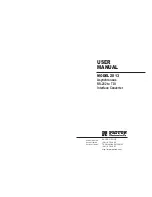
Owner’s Reference
DirectStream DAC MK2
©2022 PS Audio Inc. All rights reserved.
Introduction
®
PS Audio® Inc. 800-PSAUDIO 4865 Sterling Drive Boulder, Colorado 80301
connections between the noisy digital source and the sensitive DAC. Power supplies
that power noisy inputs are galvanically isolated from the rest of the system. Galvanic
isolation aids in the reduction jitter and unwanted audio artifcats.
DirectStream MK2 is less sensitive to the vagaries of input source types and their level
of jitter than most DACs made. Remarkably low jitter sensitivity is one of the hallmarks
of this design and is accomplished by not using classic edge transition detection
techniques used on the digital input data. Instead, a proprietary method of extremely
fast sample-and-recognize technology is employed that reduces dependency on cables,
jitter and the quality of the incoming data source.
Once the data from the selected digital audio source has been inputted, it is upsampled
to twenty times the standard DSD rate of 2.8MHz before any processing takes place.
After processing, all input data is converted to double rate DSD (5.6MHz) and outputted
through a passively filtered analog section consisting primarily of a high-quality audio
output transformer. Elimination of the classic active analog output stage, with all its
difficulties running at these high frequencies, have been implemented with a high
quality passive audio transformer.
DirectStream MK2 is entirely DSD based, even for PCM inputs. DSD was chosen as the
core engine for this instrument for a number of compelling reasons:
•
DSD is simple to convert to analog: just low pass filter it.
•
DSD is inherently linear: it’s hard to build a PCM DAC that always takes
the same sized step in the output for any possible unit increment of the
representative PCM voltage value. The best PCM technology for linearity is
arguably a resistor ladder, then all steps are at least positive for a positive
change in the input, but making resistors that are accurate to one part in 2
16
is hard and to one part in 2
20
is very hard. DSD doesn’t need anywhere near
this level of component matching.
•
DSD soft clips when overdriven, more like magnetic tape: signals which
exceed the nominal full scale value only get slightly compressed if at all.
With PCM you either have flat tops which induce extra energy at the squared
off edges or, worse, you can have wrap around, which is very audible.
•
All bits in a DSD stream have the same weight: a single bit error anywhere
is barely measurable let alone audible. Some bits in PCM carry a lot of
weight and would make a very loud pop if changed. PCM needs more error
Why DSD?
iii






































